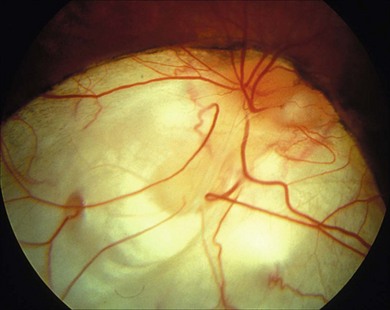

What is Retino-Choroidal Coloboma (RCC)?
A coloboma describes conditions where normal tissue in or around
the eye is missing at birth. A coloboma can affect one or both eyes. If
both eyes are involved, it can affect them the same way or differently.
What is the cause of RCC ?
The eye is one of the first organs to develop in the embryo. It
develops from a structure called the optic vesicle. The lower end of
the optic vesicle has a groove, known as the choroidal fissure, which
allows entry of blood vessels into the eye. This fissure generally
closes by the seventh week of
pregnancy. If it does not close, it
leaves a space called coloboma.
A coloboma is believed to be
genetic and can be passed along in families.
What are the symptoms of RCC?
The symptoms of a coloboma depend on which part it involves.
If only a part of their retina is involved there may be no
symptoms or there might be a “field defect,” which means that
they will not have vision in a specific location (for instance, the
upper part of the field of vision)
If coloboma involves the macula or the optic nerve, the child
will likely have reduced vision.
How can we diagnose RCC?
It is diagnosed clinically by Indirect Ophthalmoscopy done after dilating your eyes with eye drops.
How can we treat RCC?
There is no cure for a coloboma.
People with low vision can be helped to adjust to their vision problems, including using low vision
devices.
RCC can be associated with Retinal detachment. It can be prevented by Retinal photocoagulation
therapy using lasers in people at risk.
In case of retinal detachment, surgical intervention is required.
Synergy Eye Care is well equipped and its doctors are well experienced in treating this disease using required procedures and /or surgeries with good results.
Disclaimer: Information published here is for educational purposes only and is not intended to replace medical advice. If you suspect that you have a health problem, please consult your doctor immediately


